

James Wong
2026 Audi Q5 review: Quick drive
5 Days Ago
Jeep’s first EV and Australia’s first battery-electric light SUV surprises and delights in all key areas, except one.



Quickly see how this car stacks up against its competition. Select any benchmark to see more details.
Where expert car reviews meet expert car buying – CarExpert gives you trusted advice, personalised service and real savings on your next new car.
Jeep is going boldly – and bravely – where other carmakers fear to tread (at least so far) with its all-new Avenger, a pint-sized electric SUV that’s more compact than even the long-forgotten Renegade.

Measuring just 4084mm long, 1797mm wide and just 1534mm high riding on a short 2557mm wheelbase, Jeep’s first EV is the smallest vehicle to come from the American off-road specialist since its original 1941 Jeep Willys army truck.
Those dimensions – and a kerb weight of just 1520kg, or as little as 1180kg in base petrol form in Europe – make the Avenger the first battery-electric light SUV to be sold in Australia (strangely, the Mini Aceman is officially classed as a light car, not SUV), although it will quickly be followed by the Hyundai Inster early next year.
Continuing the pioneering theme, it will also be the first model to come to Australia based on the latest STLA Small (e-CMP2) platform also used by the Fiat 600 and Alfa Romeo Junior compact SUVs, alongside which the 2025 Jeep Avenger is built exclusively at Stellantis’ Tychy plant in Poland.
That said, Jeep claims it incorporates more than 600 new components, and that 60 per cent of the Avenger’s construction is unique to the US brand.

First revealed in September 2022, the Avenger was launched in Europe in early 2023 – the same year it was named European Car of the Year – then confirmed for local release in August 2023 and finally now on sale here, so the Avenger has been a long time coming to Australia’s fast-moving EV market.
We attended the national press launch this month to drive the diminutive EV for the first time on home turf, and to gauge its chances of success amid a rapidly growing field of rivals including one from within the Stellantis stable itself.
Jeep Australia first announced Avenger pricing in March this year, with a starting sticker of $53,990 before on-road costs. Pricing was then cut by $4000 at base level in September, to $49,990 plus on-roads, and by $3000 for the rest of the three-variant range.
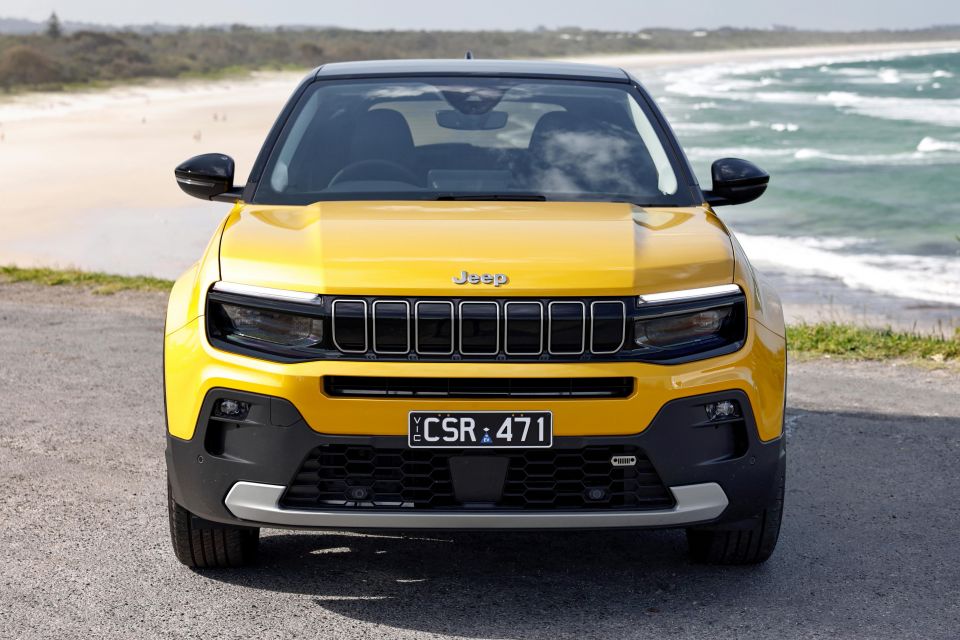
| Model | Price before on-road costs |
|---|---|
| 2025 Jeep Avenger Longitude | $49,990 |
| 2025 Jeep Avenger Limited | $54,990 |
| 2025 Jeep Avenger Summit | $60,990 |
At that price point the Avenger undercuts the Aceman (from $55,990 plus on-roads), as well as the larger Hyundai Kona Electric ($54,000 plus on-roads) and the closely related but now-sold-out Peugeot E-2008 which was originally $59,990 plus on-roads but was run-out in pre-facelift form at $39,990 drive-away.
But it’s a lot pricier than the soon-to-be-replaced MG ZS EV ($39,990 drive-away) and Chery Omoda E5 ($42,990 plus on-roads), and the larger-still Leapmotor C10 (from $45,888 plus on-roads) that is already being sold here via the Stellantis dealer network as part of a joint-venture distribution deal with the Chinese carmaker.
And while Ford Australia appears to have gone cold on the Puma Gen-E EV, the four-seat Hyundai Inster will become Australia’s third electric light SUV in early 2025, priced from under $40,000.
To see how the Jeep Avenger lines up against the competition, check out our comparison tool
Buy your new car without the stress. It's fast, simple and completely free.

Great service from Travis and team, second time I have used this business would not hesitate to recommend them to anyone
Craig C.
Purchased a Ford Ranger in Sunshine Coast, QLD
CarExpert helped Craig save $7,224 on his Ford Ranger, now let us save you on your next new car.
Get your BEST priceA lot bigger than you’d expect – and also fancier, at least in top-spec Summit form.

As you’d expect for an all-new model that brings an all-new nameplate (at least for Jeep; the Avenger name was last seen a decade ago on a forgettable mid-sized Dodge sedan), the Avenger’s clean-sheet interior design is as fresh as its cheeky five-door exterior.
While the latter is headlined by Jeep’s obligatory seven-slot grille, short overhangs, back-set lighting, a floating black C-pillar with ‘hidden’ rear door handles, colour-coded skid plates, smoother trapezoidal wheel-arches and protruding lower cladding right around the body, the cabin is equally modern and appealing.
For starters it’s a full five-seater, unlike the four-seat Inster, and the doors open wide to provide easy access into a surprisingly spacious interior with plenty of headroom even for six-foot-plus bodies, even with the sunroof that comes with the flagship Summit we drove.




There’s also plenty of storage space – a total of 26 litres, in fact, including a huge open centre console bin ahead of the drive mode selector and electronic park brake, which is big enough for a handbag but the wireless phone charger that’s standard from Limited level is at the bottom of it.
There are USB-C and USB-A outlets at the front of it, plus sizeable front door pockets with bottle holders, a decent sized glovebox and storage compartment under the centre armrest, as well as a clever full-width dashboard shelf to house all manner of oddments, though it could use a rubber mat to stop things sliding around.
But the highlight of the dash is the 10.25-inch infotainment touchscreen and the equally big 10.25-inch digital instrument cluster.
The large and colourful data presented on both displays is refreshing and will be much appreciated by ageing eyes, while the central multimedia screen presents all the information you need at a glance and a simple menu structure if you want to dig deeper.


The latest generation Uconnect software is backed by enough processing to react rapidly to all inputs instantly, whether using the native platform including embedded TomTom sat-nav (with live traffic updates), or wireless Apple CarPlay and Android Auto.
There’s also a connected services smartphone app via which you can un/lock doors, check battery charge status, schedule charging and more.
Underneath the central screen are handy homescreen and shortcut buttons flanked by large and effective face-level air vents, under which is a row of physical climate controls and a good old-fashioned volume knob, making it a breeze to operate key cabin controls.
Uniquely, under all that at the top of the centre console cubby is the transmission control bank, comprising four push-buttons to select park, reverse, neutral or drive; which when pressed again activates brake regeneration mode to provide extra ‘engine’ braking.
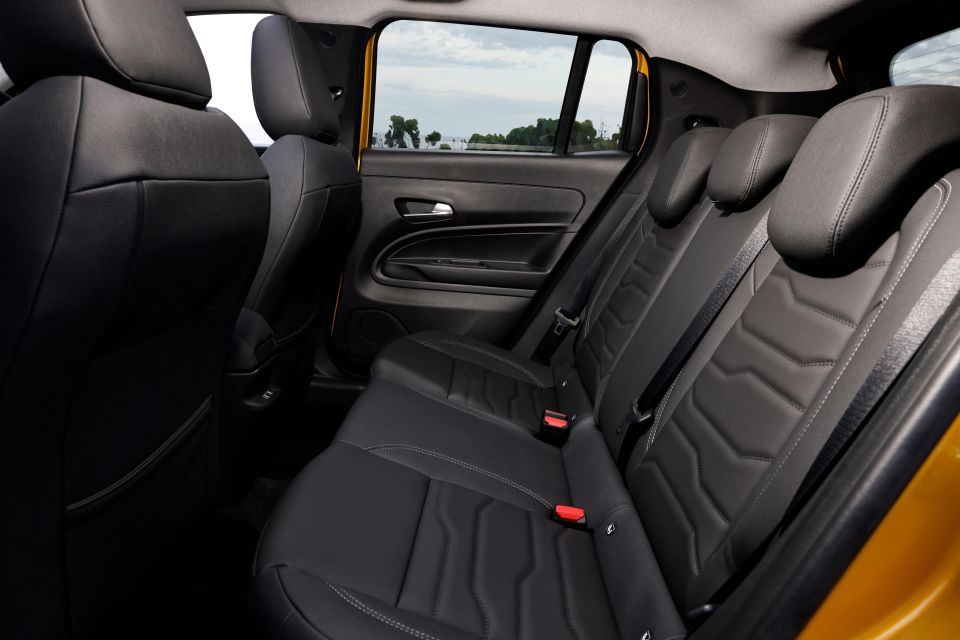

Deliberately, this is the only real giveaway that you’re driving an EV from inside the cabin, which as you’d expect for a car this small is lined with hard plastic surfaces, but they don’t detract at all from the contemporary design and all the important touch points are nicely padded.
There’s good outward vision in all directions, and the frameless rear-view mirror aids that. Strangely, however, there are no overhead grab handles whatsoever.
The front seats are generous, comfortable, supportive enough and widely adjustable (including leather-accented trim and massaging function in the Summit); and there’s sufficient room behind them for two full-size adults, thanks to clever packaging that delivers just enough knee room and foot space under the from pews.
There are ISOFIX and top-tether child seat anchors across the rear bench, but rear-seat occupants score only one USB-C outlet, no air vents, no door bins and just a pair of seatback map pockets for storage, and it could get a little claustrophobic back there for adults over long distances.

Behind the 60/40-split and folding rear seat is a surprisingly sizeable 355-litre boot.
It expands to 1252L with the rear seats folded, with a flip-up cargo floor to store charging cables and the like underneath it from Limited level, but that’s in part because there’s no spare wheel of any kind – just an inflator kit. Cargo space amenities extend to a light and a couple of carry hooks.
There’s a flush, 1000mm-wide loading lip at a convenient height of 720mm, aided by a hands-free power tailgate from Limited level upwards, but there’s no tow pack available and payload is just 495kg, so five burly blokes and their luggage will be a stretch in terms of both space and mass.
Underlining the attention to detail in the Avenger’s design is the Stellantis tradition of hiding ‘easter eggs’ throughout, in this case about a dozen of them including cheeky off-road motifs on the front and rear glass, inside the tailgate and even on the wheels.




| Dimensions | Jeep Avenger |
|---|---|
| Length | 4084mm |
| Width | 1797mm |
| Height | 1534mm |
| Wheelbase | 2557mm |
| Kerb weight | 1520kg |
| Turning circle | 10.5 metres |
| Cargo capacity | 355 litres |
To see how the Jeep Avenger lines up against the competition, check out our comparison tool
The Jeep Avenger is powered exclusively by a 115kW/260Nm electric motor driving the front wheels, fed by a 54kWh nickel manganese cobalt (NMC) lithium-ion battery mounted under the floor, offering a WLTP range of 390km (Summit) and 396km (Longitude and Limited).

| Specifications | Jeep Avenger |
|---|---|
| Drivetrain | Front-mounted electric motor |
| Battery type | Nickel-manganese-cobalt (NMC) lithium-ion |
| Battery capacity | 54kWh |
| Power | 115kW |
| Torque | 260Nm |
| Kerb weight | 1520kg |
| 0-100km/h (claimed) | 9.0 seconds |
| Driving range (WLTP) | 396km (Longitude/Limited) 390km (Summit) |
| AC charging capacity | 11kW |
| AC charging time | 5 hrs 34 mins (0-100%) |
| DC charging capacity | 100kW |
| DC charging time | 24 mins (20-80%) |
| Energy consumption | 15.6kWh/100km (Longitude/Limited) 15.8kWh/100km (Summit) |
Based on a 400V electrical architecture, the Avenger supports AC charging at up to 11kW and DC fast-charging at up to 100kW, but the entry-level Longitude comes with a 7kW onboard AC charger and an 11kW charger is reserved only for Limited and Summit variants.
At 11kW, Jeep says the Avenger battery can charge from 0-100 per cent in 5 hours 34 minutes, and from 20-80 per cent in 24 minutes at 100kW.
Energy consumption is quoted at 15.6kWh/100km for Longitude and Limited grades, rising to 15.8kWh/100km for the top-shelf Summit. On the launch drive, we saw 14kWh on the freeway and 15kWh on a mix of undulating backroads, so those figures should be easily achievable in the real world.
Similarly, we started with a claimed 400km of range from 97 per cent battery capacity and ended it with a stated 180km of remaining range at 51 per cent of capacity, equating to a realistic driving range of about 360km.
To see how the Jeep Avenger lines up against the competition, check out our comparison tool
Just like a modern European electric SUV should, albeit in a much smaller package than most Aussies are accustomed to.

We’re also unfamiliar with such a thing coming from Jeep, so the first pleasant surprise was the quiet and refined cabin ambience, broken only by the cool synthesised base guitar sound when you activate the indicators.
The next surprise is the firm but well-damped suspension that gives the Avenger a distinctly European driving flavour, and delivers crisp handling in corners yet great ride comfort over all manner of broken road surfaces.
This is no sports car, but the solid roadholding and relative lack of body roll in bends comes at almost no expense to ride quality, thanks in part to what feels like a pretty rigid body structure to start with.

Yes, the electric power-assisted, thick-rimmed and flat-bottom steering wheel lacks precision and feedback, making it feel a little digital and artificial when the pace picks up and remaining overly light even in Sport mode, but combined with this car’s puny footprint and compact 10.5m turning circle, it’s a doddle to park and punt around suburbia.
But the solid torsion-beam rear axle did crash over big potholes (there are more sophisticated and conventional MacPherson struts up front, while the all-wheel drive Avenger 4xe sold overseas gets a multilink rear end) and the four-wheel disc brakes can feel a little spongy on initial pedal stroke.
Speaking of brakes, the regenerative braking system’s B mode offers noticeably more retardation when you get off the ‘gas’, allowing you to drive in most situations without hitting the brakes, but it doesn’t offer full one-pedal driving capability.
And when it comes to performance, the Avenger doesn’t give you the full 115kW output – which sounds inadequate until you consider the circa-1500kg kerb weight of this relatively lithe EV – unless you hit the Sport button.

Where expert car reviews meet expert car buying – CarExpert gives you trusted advice, personalised service and real savings on your next new car.
When pressed, there’s significantly more pace off the line – certainly enough to keep you ahead of urban traffic – and a satisfying turn of speed, including plenty for overtaking at highway speeds.
However, a 0-100km/h time of 9.0 seconds is hardly hot hatch-like and, given the 150km/h top speed, the Avenger does its best work away from the freeway.
That said, the tiny SUV’s Level 2 autonomous driving functions are well-suited to a variety of conditions, with a well-calibrated lane keep system that leaves you alone at low speeds, an equally unobtrusive driver monitoring system, and an intuitive traffic sign recognition system that reads posted limits including at roadworks.
But it would be better if lane centring, blind spot monitoring and traffic jam assist weren’t restricted to the pricier Limited and Summit variants.

Giving it somewhat of a unique selling proposition, the Avenger is the first front-drive Jeep to offer the six-mode Select-Terrain traction control system – including Eco, Normal, Sport, Sand, Mud and Snow settings.
We didn’t drive it in the bush, but it was surprising how much traction the Avenger offered on wet sloping grass – even uphill, on 245/45 R18 Goodyear Efficient Grip eco tyres – where you could feel the electric motor metering minute levels of torque to the front wheel with the most grip.
Nobody is likely to take the Avenger seriously off-road, but if they do they’ll appreciate the well-protected lighting, body-side cladding, short overhangs, motor shielding and 200mm of ground clearance, plus 223mm under the batteries.
To see how the Jeep Avenger lines up against the competition, check out our comparison tool
The Jeep Avenger is available in three variants in Australia – Longitude, Limited and Summit.


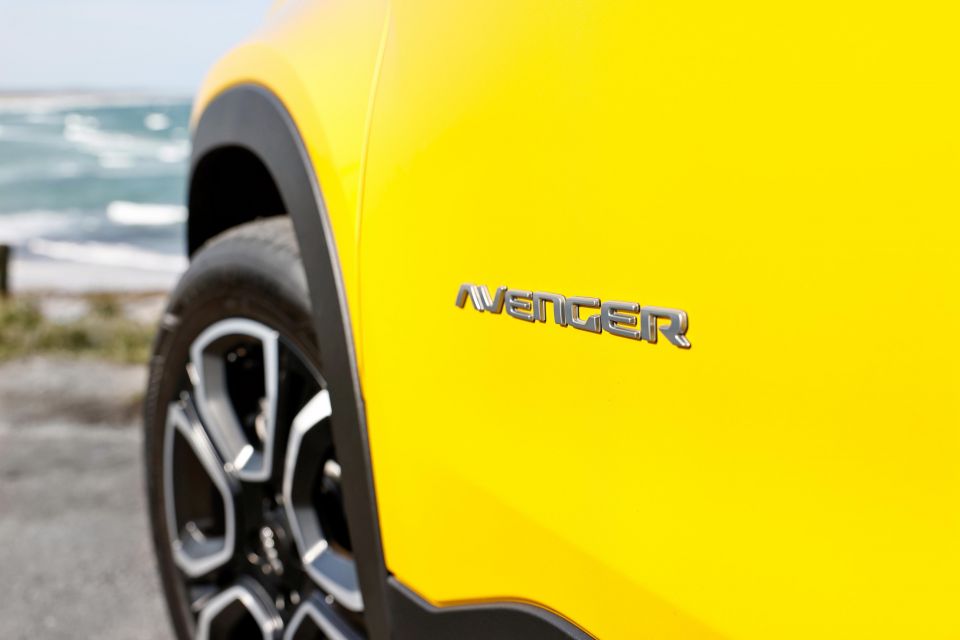

Avenger Longitude equipment highlights:
Avenger Limited adds:
Avenger Summit adds:
The Jeep Avenger Latitude and Limited are available in a choice of eight exterior paint colours, with all single-colour finishes bar Ruby incurring a $990 premium, while the two-tone Snow with Volcano black roof costs an extra $495.

Below is the full list of colours:

Summits can only be ordered in five colours, all of which are two-tone with Volcano black roofs. Ruby continues as the only no-cost finish, with the remaining four costing $990:
There are no other options, though a range of dealer-fit accessories are available.
To see how the Jeep Avenger lines up against the competition, check out our comparison tool
The Jeep Avenger is yet to be rated by ANCAP, but received a sub-standard three-star rating from affiliate Euro NCAP, which recorded the following test category scores.
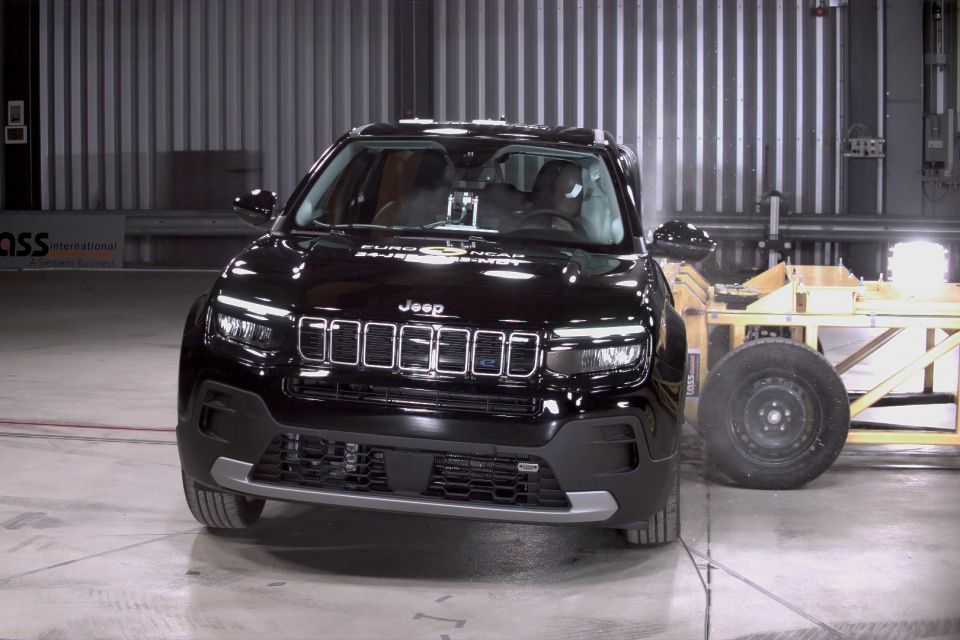
| Category | Jeep Avenger |
|---|---|
| Adult occupant protection | 79 per cent |
| Child occupant protection | 70 per cent |
| Vulnerable road user protection | 59 per cent |
| Safety assist | 53 per cent |
All Avengers come standard with six airbags including twin front, front side, and side curtains, plus rear outboard Isofix child seat anchors and a range of Level 2 driver assist functions including autonomous emergency braking, adaptive cruise control, lane keeping, traffic sign recognition and driver attention monitoring.
However, Euro NCAP deducted points for the lack of knee, centre and rear chest/pelvis airbags, as well as rear AEB, an active bonnet and cyclist dooring prevention.
Jeep Australia says it is working with ANCAP before a local safety rating is announced for the Avenger, which will be extrapolated from the Euro NCAP rating because no crash tests will be conducted here.
There are no significant differences in safety specifications between Europe’s and Australia’s model range, in which lane centring, blind spot monitoring and traffic jam assist are unavailable in entry-level Longitude vehicles.
Standard safety features include:
Limited and Summit variants add:
To see how the Jeep Avenger lines up against the competition, check out our comparison tool
The Avenger is backed by Jeep Australia’s five-year, 100,000km factory warranty, plus and eight-year, 160,000km battery warranty that is par for the course.
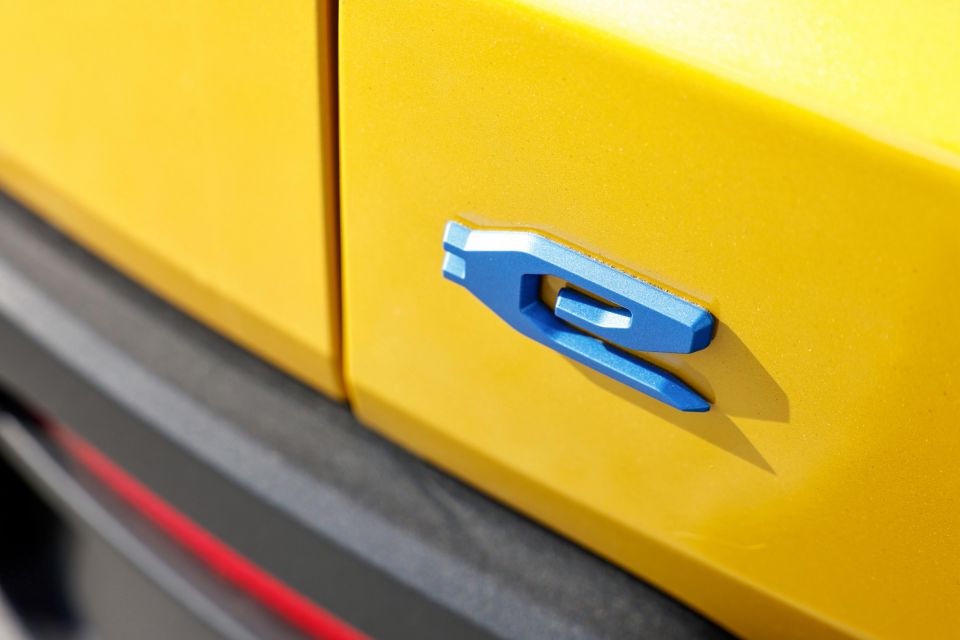
| Running costs | Jeep Avenger |
|---|---|
| Warranty | 5 years, 100,000 kilometres – vehicle 8 years or 160,000 kilometres – EV battery |
| Roadside assistance | Lifetime if serviced with Jeep |
| Service intervals | 12 months or 12,500 kilometres |
| Capped-price servicing | 5 years or 62,500 kilometres |
| Total capped-price service cost | $750 |
Capped-price service costs are $250 for each of the first five services, at intervals of 12 months or 12,500km – whichever comes first.
There’s free roadside assistance for the life of the vehicle, if it’s serviced by an official Jeep dealer.
To see how the Jeep Avenger lines up against the competition, check out our comparison tool
Buy your new car without the stress. It's fast, simple and completely free.

Great service from Travis and team, second time I have used this business would not hesitate to recommend them to anyone
Craig C.
Purchased a Ford Ranger in Sunshine Coast, QLD
CarExpert helped Craig save $7,224 on his Ford Ranger, now let us save you on your next new car.
Get your BEST priceIt’s been a long time coming, but Jeep’s first EV is almost exactly what it should be: a compact electric SUV with a distinctive design and mild off-road pretentions.

The fact it arrives with an equally distinctive European driving character – as well as solid design, material and build quality, respectable range and charging capability, and spirited performance – is a surprising bonus.
We lament the lack of blind-spot monitoring, lane centring and traffic jam assist in the base variant, and the range-wide absence of rear AEB, knee and centre airbags and other safety devices will prevent the Avenger from receiving a full five-star independent safety rating. But that’s also indicative of how tough the NCAP scoring regime has become.
However, with its $50k starting price, the Avenger is an expensive vehicle relative to both Australia’s most affordable EVs and light SUVs.
And with at least one other new electric light SUV coming soon for about $10k less, and several larger yet cheaper Chinese electric SUVs either on the way or already here – including one already being sold by Stellantis itself – the only real problem appears to be the Avenger’s price positioning.

Interested in buying a Jeep Avenger? Get in touch with one of CarExpert’s trusted dealers here
Click the images for the full gallery
MORE: Everything Jeep Avenger
Where expert car reviews meet expert car buying – CarExpert gives you trusted advice, personalised service and real savings on your next new car.


James Wong
5 Days Ago


James Wong
4 Days Ago
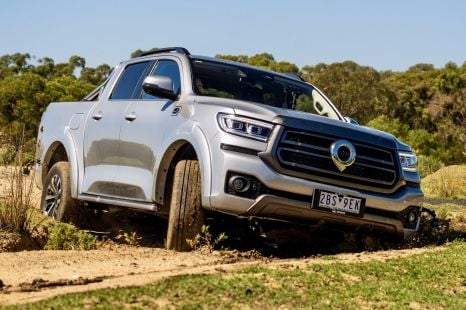

Max Davies
3 Days Ago
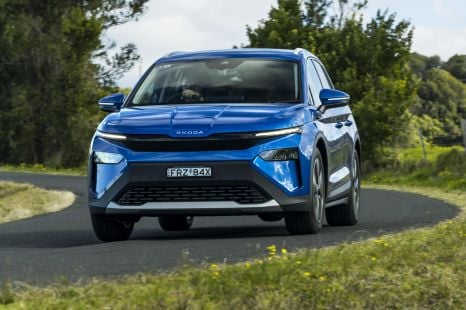

Josh Nevett
2 Days Ago


Max Davies
2 Days Ago


William Stopford
21 Hours Ago